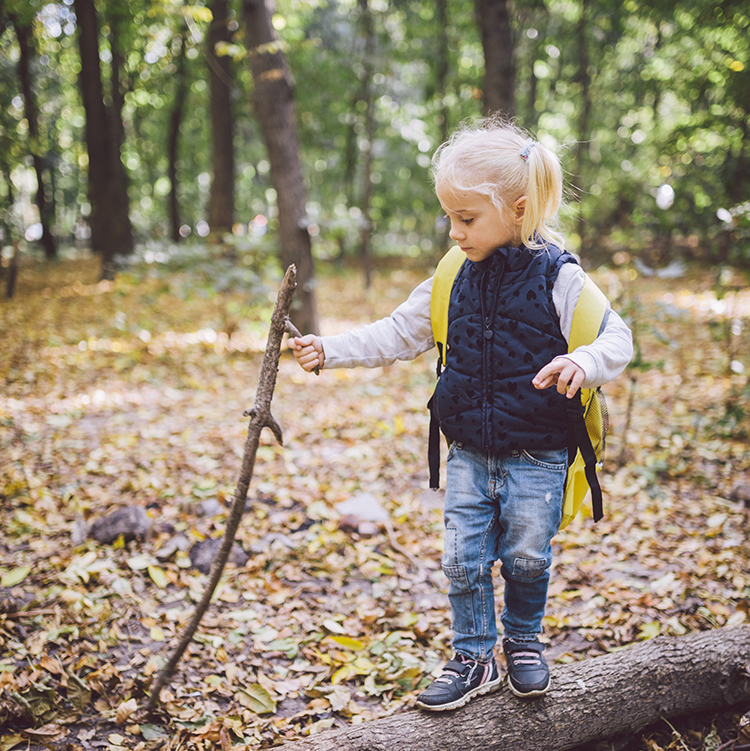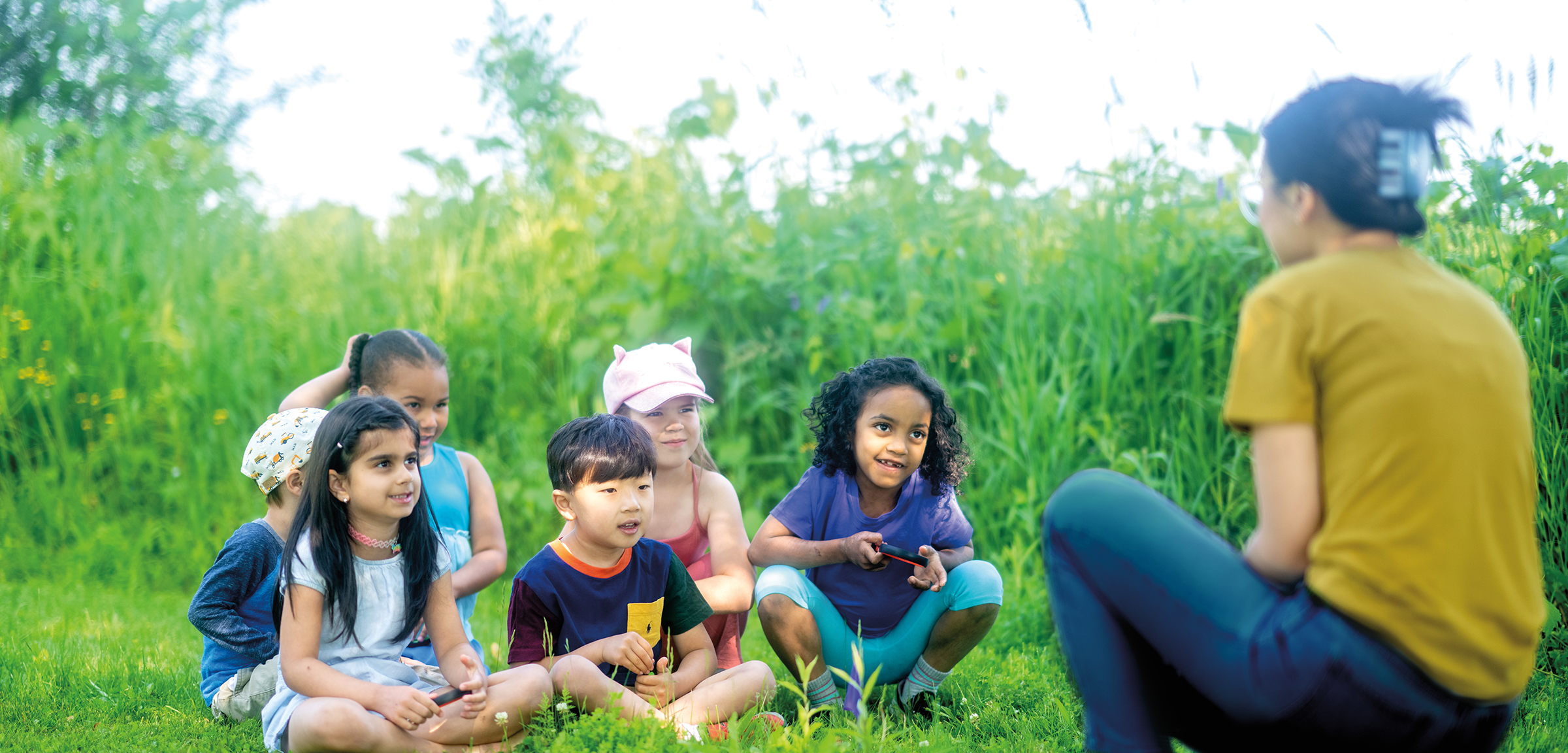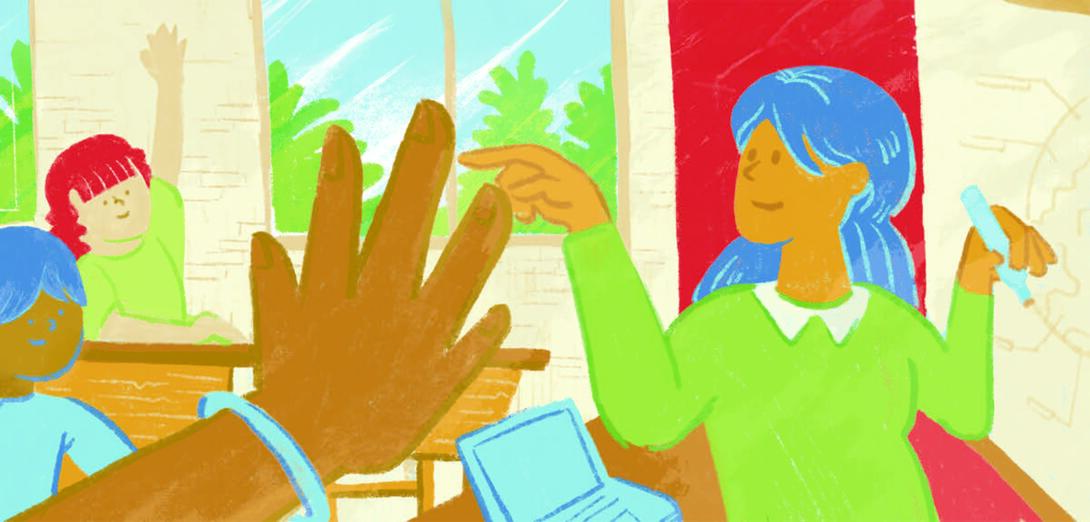What is a forest school?
Forest school is a pedagogy built on trusting relationships and a connection to the land. It takes place in a consistent location, with children and educators returning often over an extended period. Forest school prioritizes building reciprocal relationships with Indigenous Peoples, who have been learning, growing and caring for this land since time immemorial. Forest school is an educational philosophy that’s rooted in the belief that all children and youth are capable and curious, and places great value on children’s self-directed play by providing ample space and time for children to immerse themselves in play.
What are the benefits of forest school?
Outdoor child-led play helps children develop their own personal boundaries, self-assess risky situations and grow their intrinsic confidence, all skills critical to a happy, healthy life. When a child balances while walking on an elevated log, they have an opportunity to perceive a risk, such as falling off, and problem-solve by assessing the path that will get them across most safely and effectively. Perhaps it takes this child a few attempts to successfully cross, and when they do, they will likely experience a sense of accomplishment by overcoming a challenge independently, helping build confidence.
During the log balancing, this child will likely have gone through a plethora of feelings, such as fear, excitement and joy. Cycling through all these feelings helps this child work through and self-regulate emotions. Engaging in risky play supervised by caring facilitators can support child development in many beneficial ways, including embodying physical literacy by building fine and gross motor skills. Witnessing this type of growth and development in children first-hand is incredibly inspiring.

How can elements of forest school be integrated into traditional schools?
The biggest misconception about integrating forest school is that you need a forest to do it! Forest school can happen anywhere, as long as children have access to some bushes, a puddle, some logs, a snowbank or even a pile of dirt and lots of unstructured time for free play and exploration. Returning to the same natural space as a forest school group is key, as it builds stewardship in children and deepens their connection with themselves and with the land, both critical elements in decolonizing our education system. Many outcomes of Alberta’s program of study can be assessed while children are engaging in freely chosen play.
What are some barriers or limitations associated with integrating forest school into traditional schools?
Access to safe, natural spaces; inadequate outdoor gear; a shortage of supervisors; and a lack of decent time between periods are all limitations I have come across personally and ones that colleagues have mentioned to me as well. My suggestion is to start small. In your schoolyard, give your students the challenge that they are free to play; they just can’t touch the playground equipment! Some loose parts, such as logs and sticks, can often be all students need to get started in some wonderful nature-based, self-directed play.
In a caregiver newsletter distributed a few times a year, put in a callout for mittens, rain pants, snow pants, toques or whatever the needs of your class are and start a clothing library with other colleagues. Now (and here comes the hardest part most often), decentralize yourself as the teacher! Be an observant supervisor and step in to intervene with empowering language only when necessary. Let the play begin!
History of forest school
Forest school is a pedagogy that takes place in the great outdoors. The first forest school started in the 1950s in Denmark and the concept has grown in popularity in the U.K., Europe and North America ever since.
Guest contributors
Alecia Nachtigal is a Calgary kindergarten teacher and a certified forest school practitioner. She sat down with teacher Jeff Siddle, outdoor education liaison with the ATA’s Global, Environmental and Outdoor Education Council, to talk about forest schools and how they can influence traditional schools.



